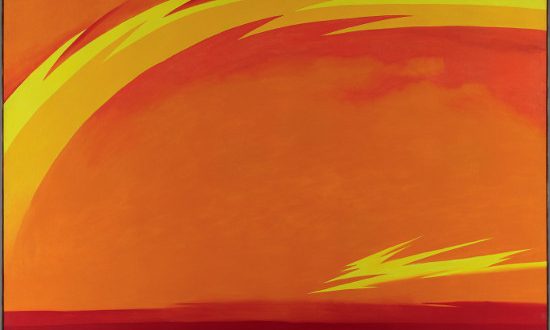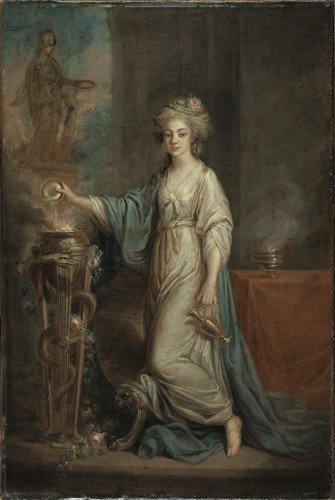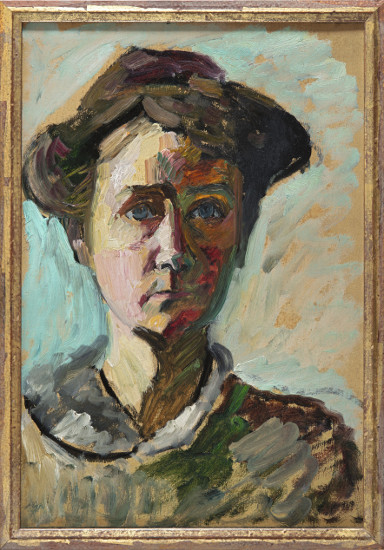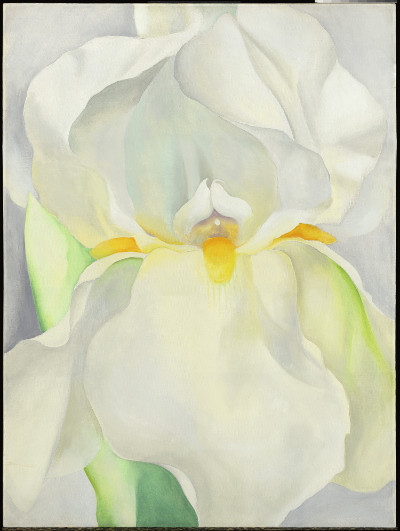
Women artists at the Thyssen Museum
Having already discussed the women artists at the Prado Museum and the women representatives of Modernism at the Reina Sofia Museum , let’s take a look at the great creative women at the Thyssen Museum!
The Thyssen is not part of Spain’s national collections, but a private initiative. Since 1993, it has been exhibiting works acquired by Baron Heinrich Thyssen-Bornemisza and his descendants, providing an overview of Western art from Gothic to modern and contemporary periods.
Yet, compared to the Reina Sofia for example, the museum offers very few works by women artists. Even more astonishing is the fact that there are no works by Spanish or Latin American artists, although the museum has been trying to remedy this situation in recent years with temporary exhibitions. Let’s discover 4 of the 6 women artists in the museum’s collections!
1. Angelica Kauffmann (1741-1807)

A Swiss-born painter, Kauffmann was a precocious illustrator who took advantage of her trips to Italy and Austria with her father to practice, becoming a portrait painter even before the age of 15. At a time when women were forbidden access to nude models and therefore to anatomical drawing classes, she succeeded in entering the Academy of Rome thanks to her study of classical sculpture, and painted historical scenes ; a format generally reserved for men, unlike portraiture.
During the 18th century it was fashionable to return to Roman antiquity, so Angelica Kauffmann decided to go where the trend was strongest: London. There, she became a successful painter and one of the founding members of the Royal Academy of Arts.
And it is indeed a neoclassical portrait that the Thyssen Museum presents here: the figure of the vestal virgin, priestess of Ancient Rome, surrounded by antique objects (the sculpture of Minerva, the garland of flowers, the coiled snake…). While she leaves a barely sketched background, the artist focuses on the details of the face and drapery, demonstrating her mastery of bodies and postures.
2. Gabriele Münter (1877-1962)

Among the pioneers of German Expressionism, female figures are rare. Yet Gabriele Münter was involved in the creation of artistic movements such as “The Blue Rider”. A close friend of Wassily Kandinsky, her work clearly evolved from figurative to abstract as she met people and traveled. His home in Murnau, Bavaria, was a place for intellectuals, as well as for experimentation, and the crafts of the region (notably famous for glass painting) played a major role in his pictorial practice. His everyday life became a real training ground.
Münter was around 30 years old when she depicted herself in this portrait in the Thyssen Museum. The painting remained in the artist’s collection for the rest of her life, and it was not until her death that its rightful owners parted with it.
3. Natalia Goncharova (1881-1962)

Natalia Goncharova is a great Russian artist. Known for her talent, she also inspired many other women during her lifetime of freedom. Born into a rural family in Negaevo, she studied at the Moscow School of Painting, where she met Mikhail Larionov, who became her lifelong companion.
Her works were inspired by Russian traditions, notably religious icons and folk art, but were also modernized by her discovery of Cubism and Futurism. She took part in the invention of Rayonism, a movement in painting based on the study and deconstruction of light. “The Fishermen” demonstrates her ability to revive traditional Russian aesthetics while infusing the scene with dynamism.
Goncharova enjoyed her first retrospective at the age of just 32, and went on to fight for women’s rights, insisting on the need for self-confidence to succeed.
4. Georgia O’Keeffe (1887-1986)


“You can’t paint New York as it is, but as you feel it.” Georgia O’Keeffe is an internationally celebrated exponent of abstract painting in the United States. Born in Wisconsin, she was a lover of nature, and distinguished by her study of shapes and colors with plants and shells. But she also painted the city of New York, its skyscrapers, its lights and the sense of confinement into which this could sometimes plunge her. This diversity of subjects is well represented in Thyssen’s collections.
Georgia O’Keeffe wanted to exhibit her paintings of New York as early as 1925, but her husband, Alfred Stieglitz, refused on the grounds that they were not “feminine” enough and that it was too hard to represent architecture, “even for a man”. A year later, O’Keeffe was able to exhibit the painting, which sold out in less than an hour. She herself said: “From then on, they let me paint New York”.
Thyssen’s collections include works by renowned women artists, along with equally famous French painters such as Berthe Morisot and Sonia Delaunay. You’ll need to be well-informed to find the works of women creators in the museums of the Paseo del Prado, but they are part of the art history in Madrid today, and you can discover it along the Promenade of the Arts thanks to our free tour Madrid . Do not miss them!